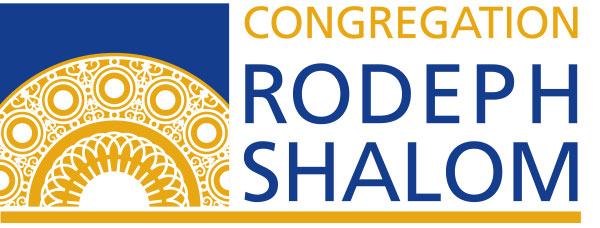One of you recently shared with me: “Question: If someone from the 1950’s suddenly appeared today, what would be the most difficult thing to explain to them about life today? Answer: I possess a device in my pocket that is capable of accessing the entirety of information known to humankind. I use it to look at pictures of cats and to get into arguments with strangers.”
On the Shabbat of March 7 -March 8 was the National Day of Unplugging. Originally conceived by a group of Jewish artists, the day is meant to help us think differently about our re-chargeable devices in order to re-charge ourselves.
One of the leaders who began the National Day of Unplugging is filmmaker and technology expert, Tiffany Shlain. In her film “Connected” Tiffany tells the story about a trip she made to visit a friend: While they were out to dinner, and enjoying the food and conversation, Tiffany felt the urge to check her phone for calls, texts, tweets–any kind of info-fix. She tried to focus. But the urge to connect so overtook her that she fake-needed to go to the bathroom. She excused herself, grabbed her phone, and hid in the bathroom stall to text and email, all the while thinking to herself: what have I become? I can’t be the only one sneaking to the bathroom to check my email.
Each week, Tiffany now takes a Technology Shabbat. Friday night through Saturday, she puts down her chargeables, and looks up at her family. She more fully engages her senses, tastes her dinner, focuses on the present moment. For this otherwise addicted techie, Tiffany writes that tech’s best feature is the off-switch. For some, like Tiffany Shlain, a national day of unplugging can be a first step toward practicing a weekly day of unplugging.
Yet, technology is just a tool. So for some, this National Day of Unplugging simply serves as conversation-starter for households and for friends, helping us to ask the question: how do we use our devices, and how do we want to use them differently on Shabbat.
During the week, we use our tools to network for clients, protesters in the Ukraine and Venezuela are using Zello, an app that allows them to contact one another anonymously–protecting them in their protest, some of you go online to search for real estate, to count Weight Watchers points, to search for a roofer, to compose a closing argument, to compose a song. Our plug-in devices allow us to accomplish tasks and to further important causes. At the same time, as we accomplish more every day, the pace of time quickens. Such fast-paced movement forward, undoubtedly threatens to distract us from the present moment.
So, even if we use our devices on Shabbat, how do we want to use them differently–to re-set time? How can we distinguish Shabbat and make it holy? How do we slow down time for one day, just enough to protect us from distance and to focus on the present moment? Perhaps, rather than using the ipad to record dieting progress, you use it to journal about what made you most grateful this week. Rather than searching for the latest world news, you search for a recipe that will warm your family’s home and fill their stomachs. Rather than confirming appointments for the coming work-week, you skype with grandparents, you play music, you enjoy family photographs. On Shabbat, we use our tools differently–that they may become vessels of holiness and connection.
Consider right now for a moment.
Reflect on your week and: identify an important work-week-appropriate task that your plug-in device helped you to accomplish…
Now consider this Shabbat and: identify an important connection your plug-in device could help you to experience…
The very same tool can serve a mundane purpose, or can serve a holy purpose. It’s a question of how we use it.
The Jewish community is now reading Vayikra, the Book of Leviticus, a handbook for ancient spiritual practice. The biblical Israelites, who had not yet innovated our practice of prayer, found ritual life in their system of sacrifices. These often joyous rituals were offered in the hope of making a request, protecting from disaster, of purification from sin, or in the aim of simply expressing gratitude.
The handbook describes devices and how to use them. The priests use their hands, crops, animals, fire. Those hands, crops, animals, fire, could be used as klei kodesh–vessels of holiness. Or, the very same hands, crops, animals, fire could be used for a mundane purpose, entirely separate from the Temple.
The tools were not all inherently special. The people’s intention and action could transform them into instruments of the mundane, or into vessels of the holy. How do we use our tools? Our smart phones, tablets, cars, televisions, pencils, paper and other technology can be used to accomplish everyday tasks during 6 days of the week.
This Shabbat, we reflect on how we can use our tools as klei kodesh, instruments of holiness. Whether or not we literally unplug, today let’s pay attention to what it is we are plugging into, spiritually. Let’s consider how the tools in our lives, no matter how high-tech or low-tech, can help to bring us closer to each other, to our own souls and to God. And this shabbat, let’s contemplate how we, each of us, can ourselves become an instrument–become klei kodesh–a vessel of holiness.
